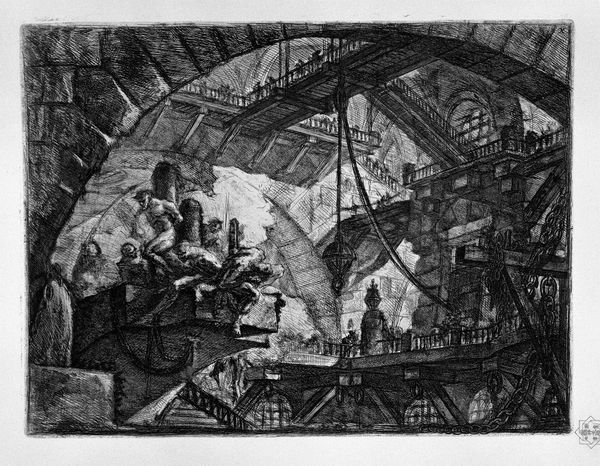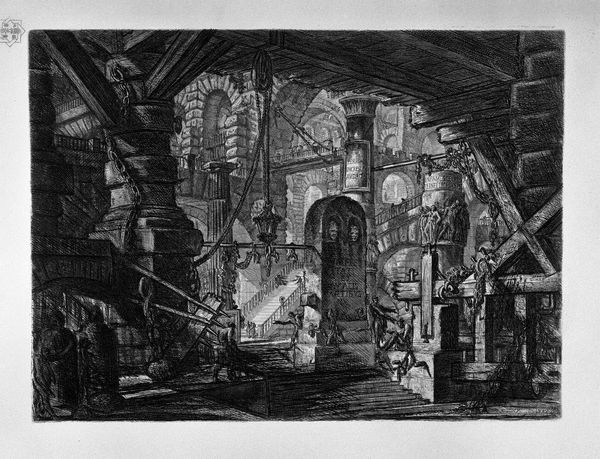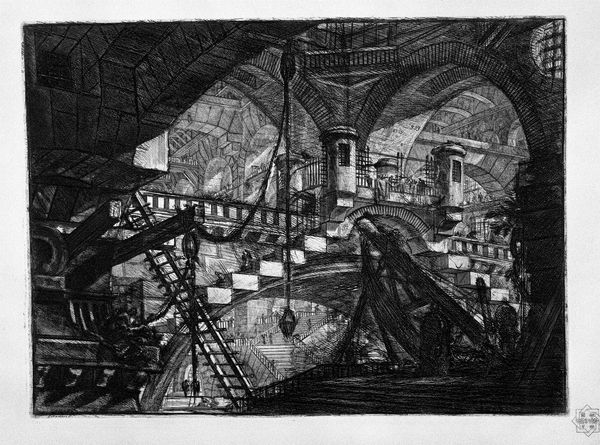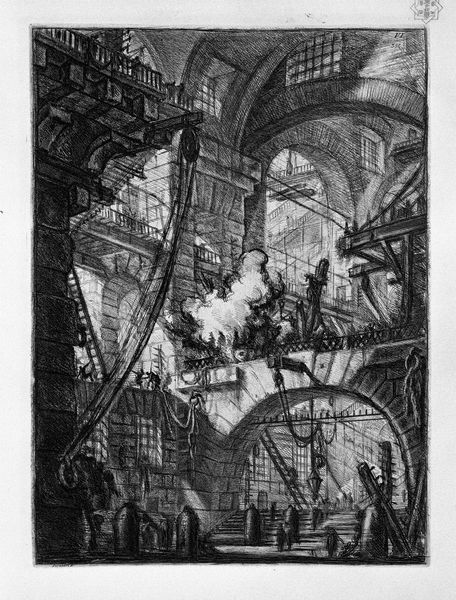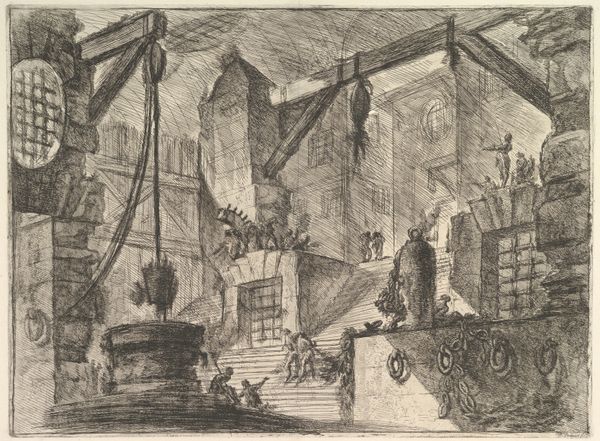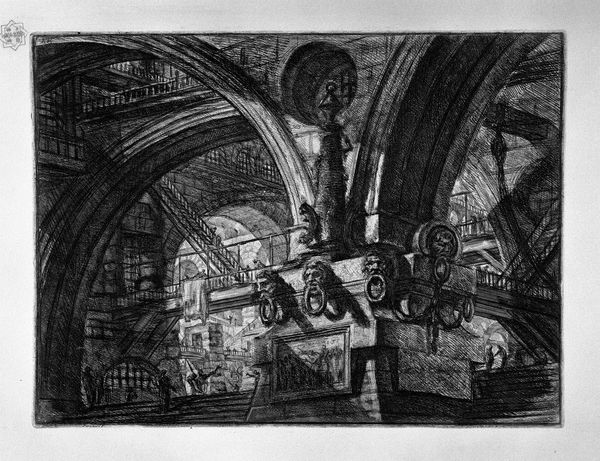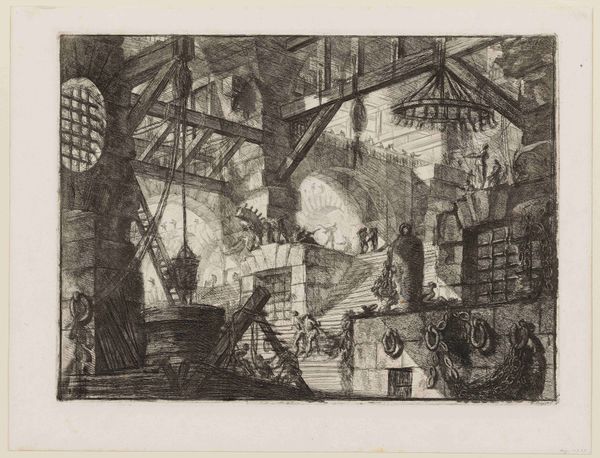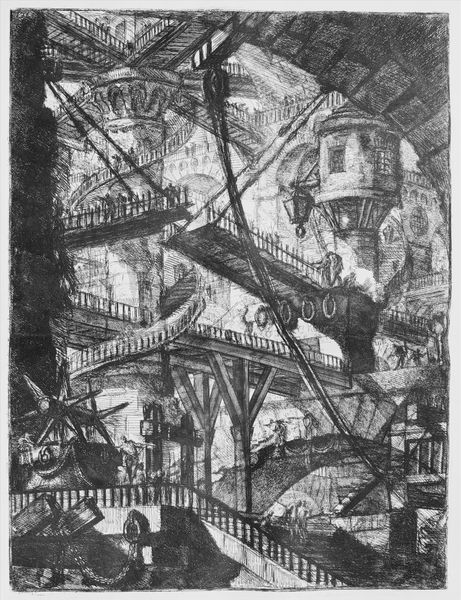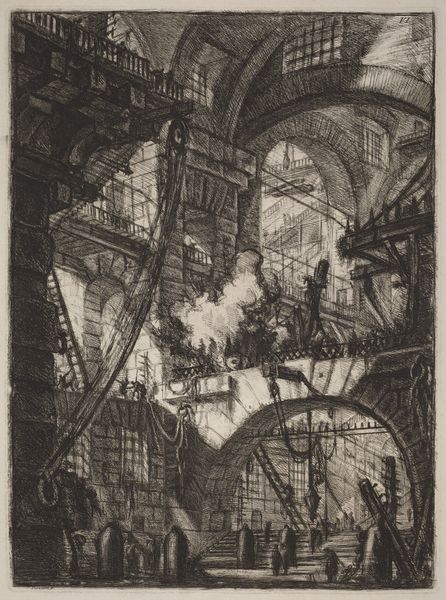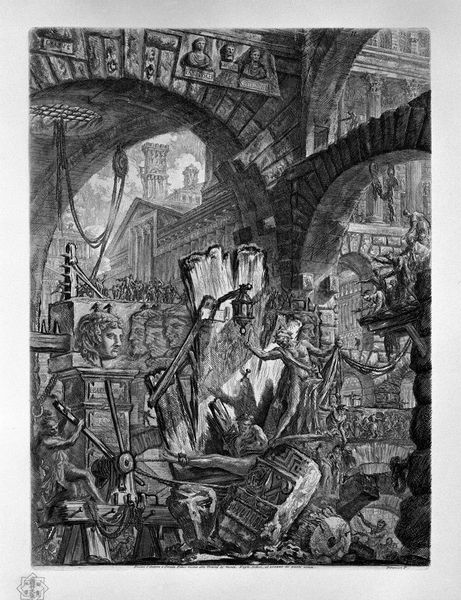
Copyright: Public domain
Editor: This is Giovanni Battista Piranesi's "The Well," created around 1761. It's an etching, and I find the composition incredibly dramatic. The architecture is imposing, almost oppressive. What do you make of the scene? Curator: Piranesi was a master of imbuing architectural forms with psychological weight. Notice the repetition of arches and the exaggerated perspective; they aren't just structural, they’re symbolic. Consider how these elements evoke feelings of confinement, perhaps even existential dread. Editor: Existential dread? That's intense! I was just thinking about the visual drama. Curator: But where does visual drama originate? Look at the tiny figures laboring within this immense space. What could they signify? Perhaps humanity’s struggle against overwhelming forces, the weight of history, the labyrinths of the mind? The "well" itself—is it a source of life, or a bottomless pit? Editor: I see what you mean. They do look insignificant, almost like ants in a huge machine. I hadn't thought of the well as symbolic, just a...well, a well. Curator: Symbols often hide in plain sight. Piranesi masterfully uses light and shadow to further emphasize the emotional and symbolic weight of his architectural fantasies. Consider the historical context too—the Enlightenment, the questioning of grand narratives. This print echoes those intellectual currents, no? Editor: Definitely. It feels like more than just a pretty picture now. It’s unsettling. Curator: Precisely. Art, especially works so steeped in symbolism, can unlock dialogues within ourselves and with history. It’s not just about what we see, but what it evokes. Editor: I’ll never look at an etching the same way again. It's fascinating how much can be communicated through imagery. Curator: Indeed. Each line carries history and memory, waiting for us to decipher its code.
Comments
No comments
Be the first to comment and join the conversation on the ultimate creative platform.
